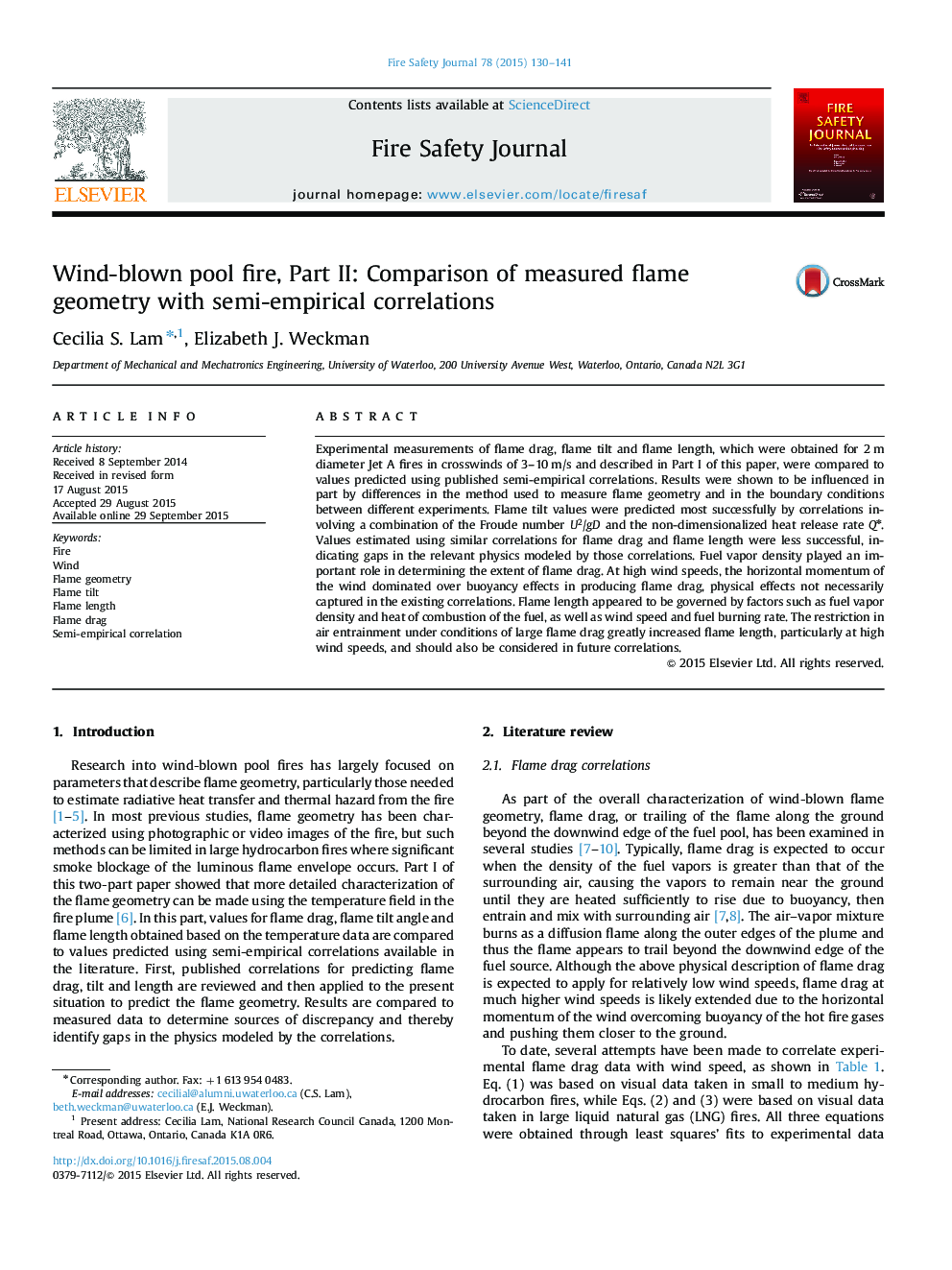| کد مقاله | کد نشریه | سال انتشار | مقاله انگلیسی | نسخه تمام متن |
|---|---|---|---|---|
| 269737 | 504698 | 2015 | 12 صفحه PDF | دانلود رایگان |
• Experimental and predicted values of flame tilt, drag and length were compared.
• Flame tilt was predicted most successfully.
• High wind momentum greatly enhanced flame drag.
• Fuel vapor density may be important in determining the extent of flame drag.
• No correlation predicted the steep increase in flame length with large flame drag.
Experimental measurements of flame drag, flame tilt and flame length, which were obtained for 2 m diameter Jet A fires in crosswinds of 3–10 m/s and described in Part I of this paper, were compared to values predicted using published semi-empirical correlations. Results were shown to be influenced in part by differences in the method used to measure flame geometry and in the boundary conditions between different experiments. Flame tilt values were predicted most successfully by correlations involving a combination of the Froude number U2/gDU2/gD and the non-dimensionalized heat release rate Q⁎. Values estimated using similar correlations for flame drag and flame length were less successful, indicating gaps in the relevant physics modeled by those correlations. Fuel vapor density played an important role in determining the extent of flame drag. At high wind speeds, the horizontal momentum of the wind dominated over buoyancy effects in producing flame drag, physical effects not necessarily captured in the existing correlations. Flame length appeared to be governed by factors such as fuel vapor density and heat of combustion of the fuel, as well as wind speed and fuel burning rate. The restriction in air entrainment under conditions of large flame drag greatly increased flame length, particularly at high wind speeds, and should also be considered in future correlations.
Journal: Fire Safety Journal - Volume 78, November 2015, Pages 130–141
